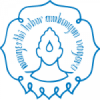Key words: Nitrification; Hedgerows;Legume Cover Crops; Mineralization of organic matter; oil Palm, Savety net nutrient filter; biologically nitrification inhibitor;litter quality
By: Purwanto, Rob.Sudaryanto, Kusnu Martoyo
Semi-controlled field experiments conducted at PT Gunatara Sawit Persada Oil palm plantations in the Muaraputih village, Natar district, South Lampung Regency is part of a series of studies to find strategy to control nitrification and leaching NO3 – in biological ways. The first year of this research conducted in May to November 2010. Research conducted by Complete Random Design (RAKL) with 7 treatments: 1).Planting legume cover crop C.pubescens and alley crop C.calothyrsus + M.macrophylla, 2).C.mucunoides and alley crop C.calothyrsus + M.macrophylla, 3).P.javanica and alley crop C.calothyrsus + M.macrophylla hall, 4).M.bracteata and alley crop C. calothyrsus +M. macrophylla, 5).M.cochicinensis and alley crop C.calothyrsus + M. macrophylla, 6).Maintenance of natural grass with empty bunch of oil palm 20 Mg ha-1 semester-1 and alley crop C.calothyrsus + M.macrophylla, 7).Maintenance of natural grass as a control. Every 3 months will done prunning and burried in rorak in each treatment plot. The main variables measured included concentrations of soil mineral N (NH4 + and NO3 -), nitrifier bacterial populations, soil nitrification potential, and soil pH conducted on day 1, and so forth once every 2 months after burried of litter.
Preliminary results indicate that the soil used for the experiment including orders ultisol and some, including Entisol, faction-dominated clay which have high water holding capacity. All the soil used for the experiment have low C-organic content ranging from a 1.5 – 1.93%, total N content of low to moderate (0.18 to 0.25%), P-is very low (4.51 to 6.24 mg kg-1), exchangeable K, low (0.14 to 0.27 cmol kg -1), exchangeable Ca low (3.35 – 4.77 me 100 g-1) and exchangeable Mg very high (1.97–2.19 me 100 g-1 soil). Initial measurements indicate that there is no significant difference in soil NH4 + concentrations between treatment plots and soil depth. Concentration of soil NH4 + ranged from 1.29 – 2.91 mg kg-1 soil. Population nitrosobacteria (NH4 + oxidizers) and nitrobacteria (NO2 – oxidizers) was varied between seasons and the treatment plot. Nitrosobacteria population of about 100 X 104 g-1 soil, while the population is always lower nitrobacteria that is about 8 x 10 4 g -1 soil. There are indications that the higher content of soil organic matter followed by the low level of soil nitrification potential.

